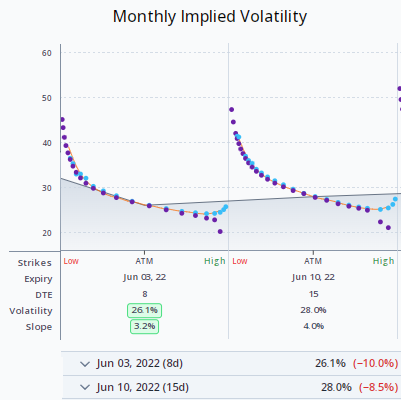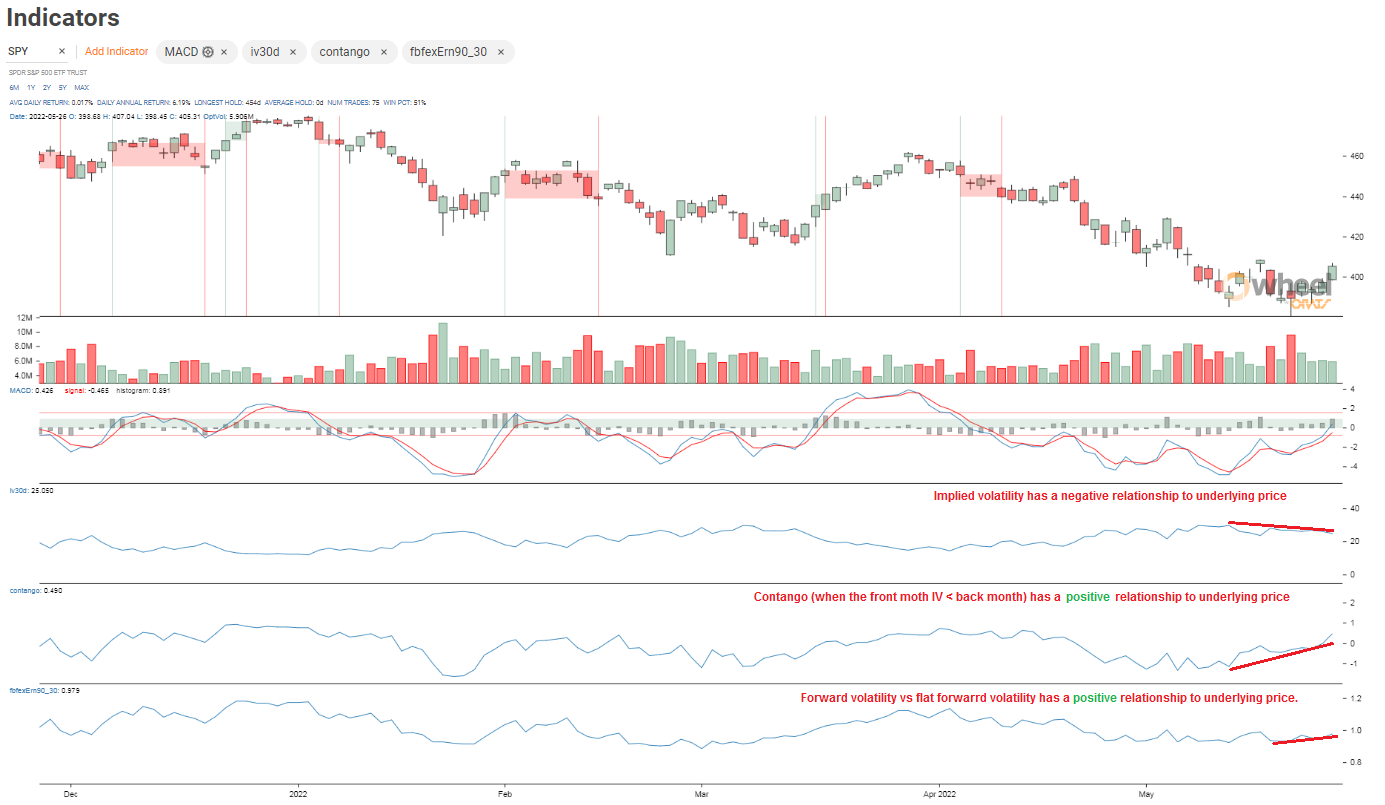Indicators
Monday, February 25th 2019
Surf the IV Implied Volatility Surface
Summarizing the implied volatility surface is an important step to understand the options trading environment for a symbol. Begin by understanding the parameters.
Summary
Summarizing the implied volatility surface is important to understand the options trading environment for a symbol. The three most important parameters are short-term IV, long-term IV, and strike slope. Short-term lower than long-term is usually bullish for the stock price. A steepening slope has an ambivalent relationship to the stock price. Other important parameters include derivative and implied earnings effect.
Surfing the BVI (British Virgin Islands) is my favorite thing to do.
Surfing the IV (Implied Volatility surface) is my second.
Summarizing the implied volatility surface is an important step to understand the options trading environment for a symbol. Here are the most important parameters in the surface:
- Short-term IV: 30 days constant maturity implied volatility.
- Long-term IV: 2 years constant maturity.
- Strike slope: the slope of the line at the tangent of the 50 delta.

Knowing these three parameters can tell you a lot about what is happening for an underlyer.
First, what is the S.T. IV vs history? Is the IV rising? This is a bearish sign usually. Second, what is the relationship between the S.T. and L.T. IV?
To understand all aspects of IV, it's important to look at the options data. Usually, the short-term is lower than the long-term and that usually is a bullish sign for the price of the stock. See our post on the term structure.
Lastly, what is the relationship of the low strikes to the high strikes and what is the trend in this reading? A steepening slope has an ambivalent relationship to the stock price; at low S.T. IV times, the slope is often high reflecting investors desire to protect recent gains in the stock (ORATS communicates the slope as positive when the low strikes are above the high strikes IV). The strike slope is important for deciding what type of strategy to employ. For example, when the slope is steep a collar is expensive (the puts IV is much higher than the calls IV) and the investor may want to consider a put spread collar (buy a higher strike put and sell a lower strike put), of course if this meets the investment objectives.
There are other important parameters of the surface, for example:
- Derivative (curvature or kurtosis) is the amount the slope changes as you move away from the 50 delta.
- Implied Earnings Effect is the amount the expirations with an earnings announcement will be affected by the expected earnings move in the stock.
A high Derivative reading usually indicates that options traders expect more movement in implied volatility.
Of course, a high implied earnings effect tell of a large expected move on the earnings announcement.
ORATS offers these IV surface parameters for the current market and historically. Feel free to contact us if you'd like to learn more about equity options data.
Disclaimer:
The opinions and ideas presented herein are for informational and educational purposes only and should not be construed to represent trading or investment advice tailored to your investment objectives. You should not rely solely on any content herein and we strongly encourage you to discuss any trades or investments with your broker or investment adviser, prior to execution. None of the information contained herein constitutes a recommendation that any particular security, portfolio, transaction, or investment strategy is suitable for any specific person. Option trading and investing involves risk and is not suitable for all investors.
All opinions are based upon information and systems considered reliable, but we do not warrant the completeness or accuracy, and such information should not be relied upon as such. We are under no obligation to update or correct any information herein. All statements and opinions are subject to change without notice.
Past performance is not indicative of future results. We do not, will not and cannot guarantee any specific outcome or profit. All traders and investors must be aware of the real risk of loss in following any strategy or investment discussed herein.
Owners, employees, directors, shareholders, officers, agents or representatives of ORATS may have interests or positions in securities of any company profiled herein. Specifically, such individuals or entities may buy or sell positions, and may or may not follow the information provided herein. Some or all of the positions may have been acquired prior to the publication of such information, and such positions may increase or decrease at any time. Any opinions expressed and/or information are statements of judgment as of the date of publication only.
Day trading, short term trading, options trading, and futures trading are extremely risky undertakings. They generally are not appropriate for someone with limited capital, little or no trading experience, and/ or a low tolerance for risk. Never execute a trade unless you can afford to and are prepared to lose your entire investment. In addition, certain trades may result in a loss greater than your entire investment. Always perform your own due diligence and, as appropriate, make informed decisions with the help of a licensed financial professional.
Commissions, fees and other costs associated with investing or trading may vary from broker to broker. All investors and traders are advised to speak with their stock broker or investment adviser about these costs. Be aware that certain trades that may be profitable for some may not be profitable for others, after taking into account these costs. In certain markets, investors and traders may not always be able to buy or sell a position at the price discussed, and consequently not be able to take advantage of certain trades discussed herein.
Be sure to read the OCCs Characteristics and Risks of Standardized Options to learn more about options trading.
Related Posts



